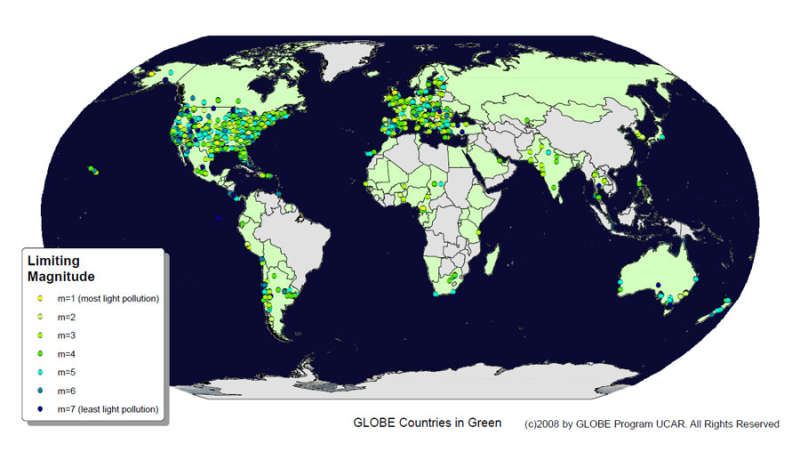
|
Explanation: How many stars can you see? Through next week, the GLOBE at Night project invites people from all over the world to go outside at night, look up, and see! Specifically, people are invited to go out an hour after sunset and look for the constellation Orion toward the west. Rather than count Orion's stars directly, however, the GLOBE at Night website has made things easier by providing several star charts to which you can compare your view of Orion. Possible matches extend from a bright sky where only a few Orion stars are visible, to a very dark sky where over 100 Orion stars are visible. Pictured above are results from last year's sky observation campaign. Since 2009 is the International Year of Astronomy, it is hoped that an even better map can be created this year. By participating in this easy and fun activity, you are helping humanity to better understand how light pollution is changing across the Earth.
|
January February March April May June July August September October November December |
| |||||||||||||||||||||||||||||||||||||||||||||||||||||||
NASA Web Site Statements, Warnings, and Disclaimers
NASA Official: Jay Norris. Specific rights apply.
A service of: LHEA at NASA / GSFC
& Michigan Tech. U.
Based on Astronomy Picture
Of the Day
Publications with keywords: light pollution
Publications with words: light pollution
See also:
